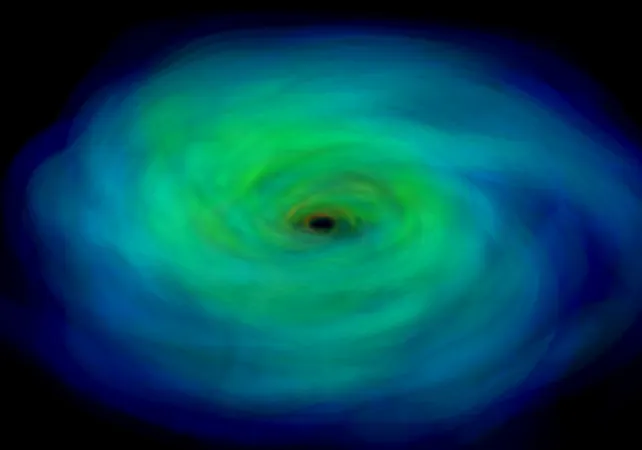
Neutron Star Mergers Revolutionize AI Training Models for Scientific Discoveries!
2024-12-12
Author: Noah
Introduction
Groundbreaking research at Los Alamos National Laboratory (LANL) is paving the way for artificial intelligence (AI) to unlock new scientific frontiers. Through advanced simulations of neutron star mergers, LANL is part of a powerful collaboration called Polymathic AI, which aims to train AI models for predictions that span a multitude of scientific disciplines—from astrophysics to biology!
The Significance of Neutron Star Mergers
Neutron star mergers are among the most dramatic and explosive events in our universe. When two neutron stars, which have orbited each other for billions of years, collide, they produce a massive release of energy including gamma-ray bursts and heavy elements essential for life. Jonah Miller, an astrophysicist at LANL, shared insights about the significance of these simulations: “The goal of the Polymathic AI project is to develop foundation models that leverage a wealth of simulation data to extract valuable patterns applicable across various scientific fields.”
AI and Rapid Predictions
The neural networks trained on these simulations are not just powerful tools; they offer profound insights. These models can detect universal trends like the conservation of mass and energy, allowing researchers to make rapid predictions without the need for costly simulations that can take weeks or even months. For instance, each of Miller’s simulations took around three weeks on a supercomputer, utilizing hundreds of cores. The introduction of AI could mean researchers get the insights they need far quicker and at a fraction of the cost.
Explore the Datasets: A Treasure Trove for Researchers!
The primary dataset, known as “The Well,” encompasses a variety of simulations including those of biological systems, fluid dynamics, and supernova explosions. The second dataset, “Multimodal Universe,” is a mind-boggling compilation of astronomical observations, including stunning images from NASA’s James Webb Space Telescope. Together, these datasets—totalling an impressive 115 terabytes—are now available for free download, revolutionizing how the scientific community approaches machine learning.
Potential and Implications
Miller emphasizes the potential of these models: “AI can reveal insights that may evade human researchers. By understanding the governed laws of physics, foundational models can help refine future simulations and enhance predictions across various scientific realms.” Not only is this research set to impact astrophysics, but its implications ripple through numerous disciplines including chemistry, acoustics, and fluid dynamics. The transformative power of AI in sharpening scientific research cannot be overstated.
Further Information and Conclusion
For those interested in diving deeper, more information about the datasets can be found in a forthcoming paper to be presented at the prestigious NeurIPS machine learning conference in Vancouver. This innovative work represents a critical fusion of astrophysics and AI, promising to propel scientific discoveries into new dimensions. Don’t miss out on the opportunity to access these invaluable resources for your research!









 Brasil (PT)
Brasil (PT)
 Canada (EN)
Canada (EN)
 Chile (ES)
Chile (ES)
 España (ES)
España (ES)
 France (FR)
France (FR)
 Hong Kong (EN)
Hong Kong (EN)
 Italia (IT)
Italia (IT)
 日本 (JA)
日本 (JA)
 Magyarország (HU)
Magyarország (HU)
 Norge (NO)
Norge (NO)
 Polska (PL)
Polska (PL)
 Schweiz (DE)
Schweiz (DE)
 Singapore (EN)
Singapore (EN)
 Sverige (SV)
Sverige (SV)
 Suomi (FI)
Suomi (FI)
 Türkiye (TR)
Türkiye (TR)